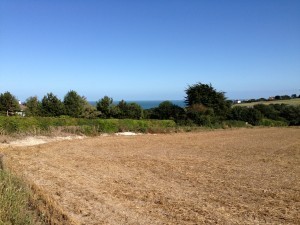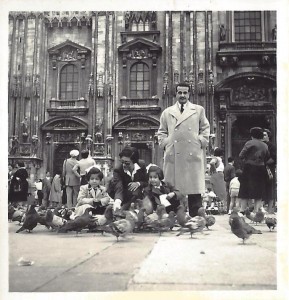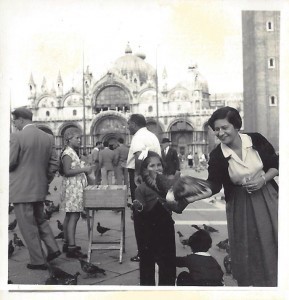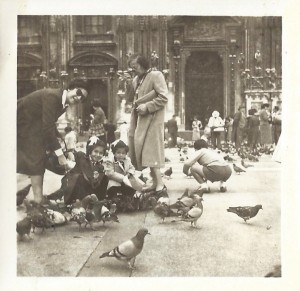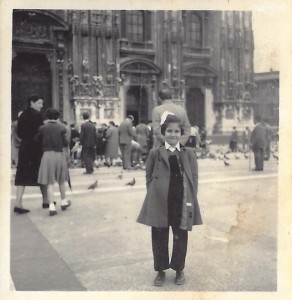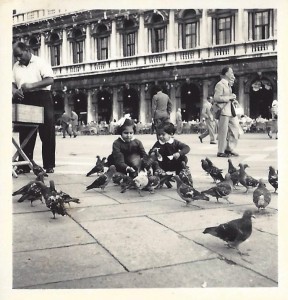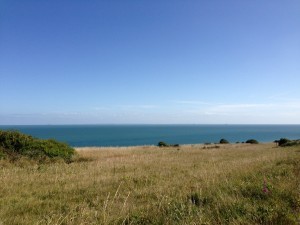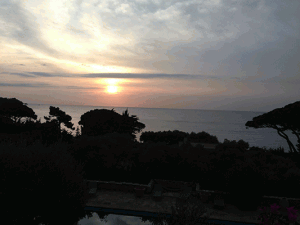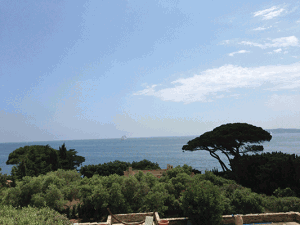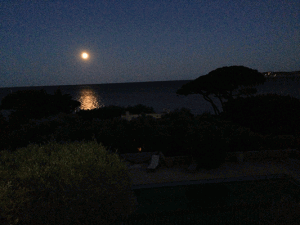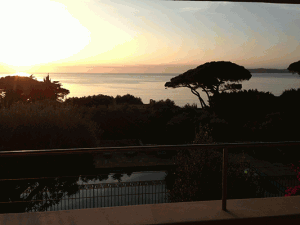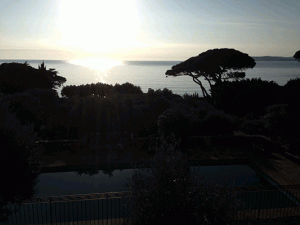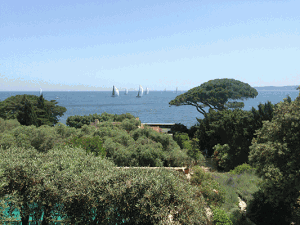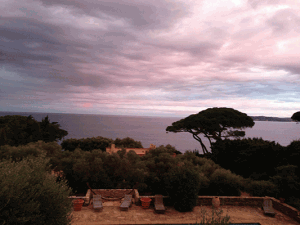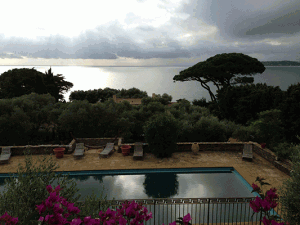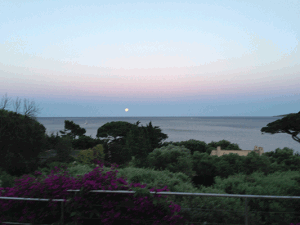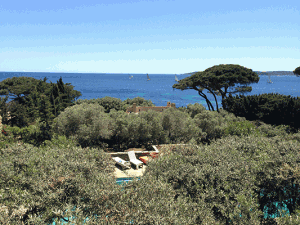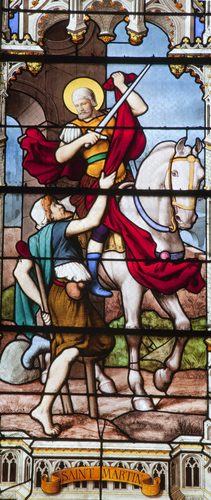Hannah Fielding's Blog, page 117
November 20, 2013
Choosing a book to read based on its length
Picture the scene:
 It’s a quiet Saturday in your local town, and the heavens have opened. Thankfully, you’re near your favourite book store, so you hurry there. Shaking off the water drops on the doormat, you consider your options: 1) wait at the door until the rain lessens, 2) do a little browsing, or 3) start scouting seriously for a new book. Option 1 is clearly out: it feels sacrilegious to be in a book store and not even look. Option 2 is sensible, but not remotely as fun as Option 3… You tell yourself that, just like calories you drink rather than eat don’t count (think frothy cappuccinos), purchases of books – those wonderful, diverting, educative friends – are never naughty, only ever nice. You reach for a basket and start looking.
It’s a quiet Saturday in your local town, and the heavens have opened. Thankfully, you’re near your favourite book store, so you hurry there. Shaking off the water drops on the doormat, you consider your options: 1) wait at the door until the rain lessens, 2) do a little browsing, or 3) start scouting seriously for a new book. Option 1 is clearly out: it feels sacrilegious to be in a book store and not even look. Option 2 is sensible, but not remotely as fun as Option 3… You tell yourself that, just like calories you drink rather than eat don’t count (think frothy cappuccinos), purchases of books – those wonderful, diverting, educative friends – are never naughty, only ever nice. You reach for a basket and start looking.
Fifteen minutes later, you’re trying to choose between two romance novels. You’ve compared covers. You’ve compared blurbs. You’ve compared first pages. You’ve compared prices. What next? You turn the books on end, of course, and compare the thickness. Which is the longer book? It’s a crucial question for most book buyers…
How important is book length to you? Which do you prefer – short books or long books? Do you read a mix of both? Do you deliberately stick to quick-grab reads, and embrace the recent renaissance of the novella? Or do you shy away from anything too succinct and seek out weighty tomes that will keep you going for a good while?
Most readers have a preference. Personally, I tend to gravitate toward longer reads. I love the weight of the book in my hands. I love knowing that the story is that detailed, that sustained. I love to start on page one knowing that there’s a long journey ahead, and I love the feeling of accomplishment when I finish. For me, there is something infinitely comforting about a long book.
Some readers take the ‘bigger is best’ approach to the extreme and seek out the longest books for their collections, so-called ‘literary doorstops’. The Guardian recently suggested ten of the best long reads: The Goldfinch, Donna Tartt; The Luminaries, Eleanor Catton; A Suitable Boy, Vikram Seth; Cedilla, Adam Mars-Jones; Middlemarch, George Eliot; Underworld, Don DeLillo; My Struggle, Karl Ove Knausgaard; In Search of Lost Time, Marcel Proust; 2666, Roberto Bolaño; Infinite Jest, David Foster Wallace. Other than the Bible, Proust’s In Search of Lost Time is the longest book ever written, with a staggering 1,200,000 words (which makes my 105,000-word novels seem like very quick reads in comparison!). Two other long reads I highly recommend are Les Misérables by Victor Hugo (531,000 words) and War and Peace by Tolstoy (587,000 words).
For readers of romance who like a simpler, shorter read, the publishers Harlequin and Mills & Boon have imprints particularly tailored for slim books – around 35,000 words. Even I can appreciate the quick escapism afforded by a short book such as this, and the writing quality and poignancy of the story can be just as good.
What do you think? Is there room in the market for all lengths of books? Would you like to see more books published at either end of the spectrum? What’s your ideal length of book? Are you happy to see that the revolution in self-publishing is opening the door to all kinds of lengths of books, from novelettes to epics?
I would love to hear your thoughts.
November 19, 2013
Announcing The Echoes of Love Blog Tour 2013
I’m delighted to announce the tour for my new novel, The Echoes of Love, which will publish on 6th December. Do check out my interviews and guest posts with the following bloggers if you get the chance…
Witches’ mirrors
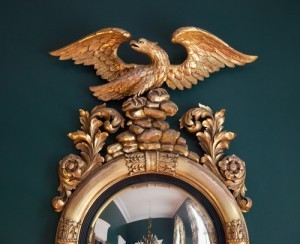 One of my guilty pleasures, I confess, is rummaging about in bric-a-brac, antique and curios shops, looking for items that catch my fancy – a particularly vividly coloured glass vase, for example, or a beautiful, old wooden chest. As I wrote the heroine of my new book, The Echoes of Love, this passion of mine crept in:
One of my guilty pleasures, I confess, is rummaging about in bric-a-brac, antique and curios shops, looking for items that catch my fancy – a particularly vividly coloured glass vase, for example, or a beautiful, old wooden chest. As I wrote the heroine of my new book, The Echoes of Love, this passion of mine crept in:
The city, being so compact, was ideal for strolling down side-streets and picking up an array of strange and wonderful curiosities in Venice’s old shops, from exotic fabrics, objets d’art and antiques to speciality foods, collectors’ books and convex ‘witches’ mirrors’ so particular to the city.
The beauty of having travelled widely is that I’ve been able to see all manner of unusual objects, and in Venice one that really caught my fancy was the old witch’s eye mirror (or, in French, oeil de sorcière: the wizard’s eye).
What’s special about a witch’s mirror is that its surface is curved, convex, which has a transformative effect on the subject – a little like the mirrors you find at a funfair. There is something most fairytale about them, calling to mind Snow White, for example, and it is little wonder that the mirrors found their way into the artistic imagination from their very inception, as in ‘The Arnolfini Wedding’ by Netherlandish painter Jan Van Eyck, and Parmigianino’s self-portrait.
In olden times, folklore held that such mirrors were witches’ eyes because they were portals through which ‘witches’ may observe all. But far from being seen as sinister, clearly the witches in questions were good souls, because the tradition was to have one of these mirrors hung next to a door or window to protect against bad luck.
The mirrors were immensely popular in the 16th century in Northern Europe. Later, the mirrors were taken up by those traders involved in finance, and called ‘bankers’ eyes’, because it was realised that careful positioning of such a mirror in a bank or goldsmiths allowed staff to closely watch otherwise out-of-sight areas. Even to this day, the mirrors are frequently used for such a purpose.
But for me, the classic, authentic wall mirrors are the best. If you go to Venice, it’s well worth a visit to Canestrelliin the Dorsoduro area. The shop specialises in handmade witches’ mirrors, and has a wide array.
November 18, 2013
Favourite poem: ‘Venice’ by Henry Wadsworth Longfellow
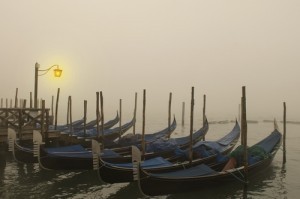 Rare is the poet or writer or artist who visits Venice and is not so inspired that the city finds its way into a creative work. The lines of the architecture, the colours in the clothes, the food, the water, the sky; the scents of votive candles in the churches and the coffee and pastries enjoyed at pavement café tables; the splash of water against the gondolas, the excited gabbling of tourists, the steady hum of locals going about their business… everywhere you look, feel, smell, listen, taste are myriad sensory experiences to nourish your muse.
Rare is the poet or writer or artist who visits Venice and is not so inspired that the city finds its way into a creative work. The lines of the architecture, the colours in the clothes, the food, the water, the sky; the scents of votive candles in the churches and the coffee and pastries enjoyed at pavement café tables; the splash of water against the gondolas, the excited gabbling of tourists, the steady hum of locals going about their business… everywhere you look, feel, smell, listen, taste are myriad sensory experiences to nourish your muse.
One of my favourite poems about the city was penned by 19th-century American poet Henry Wadsworth Longfellow, who visited the city while on his European travels. Longfellow was one of the ‘Fireside Poets’ – a group of five poets based in New England whose works were very popular and hence read aloud at firesides in the evenings. A significant feature of these poets’ works was that they were aimed at ‘the common man’, and were designed to be accessible, memorable and easy to recite among families and in schools. For his work Longfellow in particular was much admired in his day.
Longfellow’s poem, entitled simply ‘Venice’, bears testament to the lyricism of his writing, his gift for description and his ability to bring to life a notion or a place in such a way that any reader can be moved. I love how he captures the beauty of the city, but also its air of dreaminess in words like ‘phantom’, ‘shadows’, ‘vanish’ and ‘mirage’. I too have always thought mystique to be synonymous with Venice, and that idea forms the basis of my novel, The Echoes of Love, in which what you see at surface level is never entirely the full truth.
Here is the poem. I recommend reading it aloud for the best experience of the lyrical rhythm.
White swan of cities, slumbering in thy nest
So wonderfully built among the reeds
Of the lagoon, that fences thee and feeds,
As sayeth thy old historian and thy guest!
White water-lily, cradled and caressed
By ocean streams, and from the silt and weeds
Lifting thy golden filaments and seeds.
Thy sun-illumined spires, thy crown and crest!
White phantom city, whose untrodden streets
Are rivers, and whose pavements are the shifting
Shadows of palaces and strips of sky;
I wait to see thee vanish like the fleets
Seen in mirage, or towers of cloud uplifting
In air their unsubstantial masonry.
November 17, 2013
In the country
November 16, 2013
Remembering my first ever trip to Venice
A couple of weeks ago I wrote a post entitled ‘Inspiration for my new book: The two faces of Venice’ in which I described first visiting the city as a young girl:
I first visited Venice as a young child. Then, as now, I was wide-eyed and enchanted by the beauty of the city. I distinctly remember standing in the main square, the Piazza St Marco, gazing up at the stunning architecture of Saint Mark’s Basilica, and feeling I had somehow entered another world – a fairytale world. Then I looked down, at the square itself, which was overrun by hordes of pigeons. There was nothing beautiful about those birds. They were quite spoiling the place. And it struck me then that Venice is a city of two faces: that which the tourists flock to admire, that makes the city the capital of romance, that breathes new life into the imagination and leaves a permanent, inspirational impression. And the other side, the darker side, that which is concealed in what Erica Jong called ‘the city of mirrors, the city of mirages’.
Today, I’m sharing some pictures of my visit that day, with my parents, my sister and my governess, which spark wonderful feelings of nostalgia in me.
November 14, 2013
Paradise
November 13, 2013
My inspiration: The differing views from my window in the South of France
When I was a little girl, my bedroom had a spectacular view of the ocean. I would regularly sit at the window and daydream, enchanted by the blue of the waves and the dancing of the sun’s rays on the surface. When I grew up, I spread my wings and left my home town, Alexandria, and Egypt, but I knew I would never quite feel right in myself if I was too far from the ocean that had so inspired me as a child. Hence my homes now in both Kent and France are near the sea – but I especially love the views from my French home over the azure Mediterranean. I have situated my writing desk to take advantage of the best view in the house, from my bedroom window, and I write looking out at the sea and the sky.
What most amazes me about the view is its transient nature. There is always something new, something beautiful, to see. Over the past few months I took a series of ten photographs of the view, to demonstrate the changing moods and colours of the panorama. Today, I am sharing those photographs with you, so you can understand how easy it is for me to conjure up a mood of passion or poignancy or light when I am writing a romance book.
The first is an early-morning view – hazy and dreamy and full of the promise of a spectacular day to come.
Next comes a mild spring morning, well after sunrise. The sea is a wonderfully deep shade of blue against the cerulean sky, with its wispy, cotton-candy clouds. And there, just visible near the horizon, a white-sailed yacht.
Nighttime now. The moon is so reddened it appears more golden, like the sun, and it hangs pendulously in the sky, reflecting a flickering path in the waves below.
The very cusp of dawn. I love the yellow light cast out above the rising sun, ready to wash away the delicate pinks and awaken the still-silhouetted trees before me into verdant, lush vegetation.
And now, glorious sunbeams shine like speckles of gold on the ocean – dazzling, beautiful, breathtaking.
A peaceful afternoon with not a cloud in the sky – perfect weather for soothing sailing, as evidenced by the dancing sails laid out yonder.
Sunset, and all the clouds are tinged with paint as if a great artist has daubed his most pastel shade on their underbellies.
An August storm approaches rapidly, and two opposites collide – the warm, glaring sunshine and the dark, threatening clouds. Lightning and thunder are sure to follow in Nature’s show of might.
Twilight. The sun is a tiny speck, dwarfed by the gathering night. And yet colour remains – in the purple of the flowers and, beyond, the last strip of blue sky and the pink tinge of the horizon’s haze.
To finish, the very bluest of seas created by dazzling heat and a clear, so-very-blue sky. I love the contrast of the silvery-green olive trees and the sapphire ocean. How could a writer fail to be fired up by such wonder and colour!
November 11, 2013
NEW RELEASE: Book trailer for my new novel, The Echoes of Love
I hope you enjoy the book trailer for The Echoes of Love. I’d love to hear your thoughts on it, and please do share if you’d like to.
Venice festivals: The Feast of St. Martin
St. Martin, born in AD 316, was a kind and humble member of the Roman guard who became a Christian saint. He built monasteries at Ligugè and Mamontier, and served as the bishop of Tours (he is buried in the cathedral there).
So goes the legend, on a dismal 11th of November Martin was riding his horse in the rain and cold when he met an old man struggling against the elements. Martin used his sword to cut his cloak in half, and he gave half to the old man. Shorty afterwards, the clouds parted and the sun came up, warming the day. That night Jesus came to him in a dream and thanked him for his kindness. Since then, warm days in November have been referred to as the summer of St. Martin.
In remembrance of St. Martin, the Venetians hold a feast day on 11th November. In olden days the feast involved a procession that wound up at the Church of St. Martin in the Castello district. But today all that remains of that procession is the children’s part. Children run through the streets of the city, bashing on pots and pans with wooden spoons and singing. Basically, the cacophony involves a threat to continue unless onlookers cough up a reward, like coins or sweets. The ethos is similar to that of the ‘trick or treat’ at Halloween. It’s a very noisy, jubilant event – just what the city needs given that 11th November is, of course, also Remembrance Day when people come together to remember sadly those who fell in the First World War.
There are also decorations in honour of the saint, and cakes depicting him on horseback. Bakery windows are crammed full of delicious looking offerings (take a look at this picture), or you can make your own at home (see this wonderful recipe to try the cake yourself: http://www.veniceconnected.com/content/desserts). I can just imagine my characters in my new novel The Echoes of Love, Paolo and Venetia, partaking of a cake or two!
Interestingly, the Venetians have a custom that you don’t open new wine until St. Martin’s Day. So no doubt it is not only the children who very much enjoy this feast day…
St. Martin is not only remembered in Venice, however – he’s an important and noted saint across Europe, and St. Martin’s Day carries weight outside the Italian city. For example:
Most of Western Europe, from the late 4th century until the Middle Ages, would fast from the day after St. Martin’s Day for 40 days – the Quadragesima Sancti Martini (the forty days of St. Martin) – in spiritual preparation for Christmas. You can imagine, then, how much those fasters feasted on the saint’s day itself!
Children in the Netherlands, and areas of Germany and Austria still participate in paper lantern processions.
In Portugal, the saint’s day is celebrated across the country by families coming together to eat roasted chestnuts and drink wine.
Other interesting St. Martin facts:
St. Martin-in-the-Fields at Trafalgar Square, London, and St. Martin’s Cathedral in Ypres are dedicated to him, as is St. Martin’s Church in Kaiserslautern, Germany.
St. Martin is the patron saint of many places, including Buenos Aires and France.
He was influential in spreading wine-making though parts of France.
Martin Luther was named after St. Martin.
To find out more about the saint, take a look at http://en.wikipedia.org/wiki/Martin_of_Tours.



